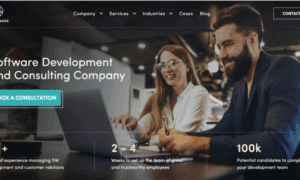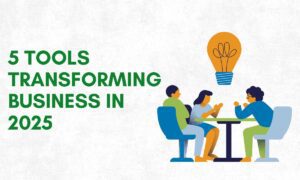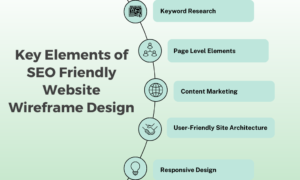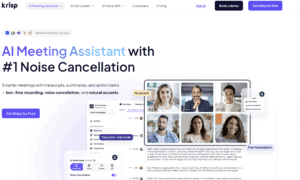First impressions matter. The moment someone steps into your office, the experience they have can influence how they perceive your brand. For decades, offices have relied on traditional logbooks to keep track of visitors. Visitors would write their name, contact details, and purpose of visit in a physical book at reception. This approach worked well in the past, especially for smaller offices with minimal foot traffic.
However, as businesses grow and security becomes more critical, relying solely on logbooks is no longer sufficient. Digital solutions, specifically visitor management software, are increasingly becoming the preferred choice for businesses across the USA. But which is truly better? Let’s break it down.
What Are Traditional Logbooks?
A traditional logbook is a simple paper register kept at the reception desk. Visitors manually fill in basic details such as name, contact information, time of arrival, and the person they are meeting.
Advantages of Traditional Logbooks
- Simplicity: Using a logbook requires no technical expertise or training. Visitors and staff alike can fill it in easily.
- Low Initial Cost: A notebook and a pen are inexpensive, making it a viable option for small offices on a tight budget.
- Tangible Record: A physical logbook provides a tangible copy of all entries, which can be useful for quick reference.
Limitations of Traditional Logbooks
Despite their simplicity, traditional logbooks have significant limitations, especially for modern offices:
- Human Error: Visitors may skip fields, miswrite names or contact numbers, or produce illegible entries.
- Time-Consuming: Checking in multiple visitors manually slows down the reception process and can create bottlenecks during peak hours.
- Limited Security: Paper logs are vulnerable to theft, loss, or tampering, putting sensitive visitor information at risk.
- No Analytics or Insights: Extracting data from a physical logbook is difficult. Tracking visitor trends, frequency, or repeat visitors requires tedious manual work.
- Compliance Challenges: Meeting data privacy regulations like GDPR or CCPA is nearly impossible with physical records, as sensitive information is not easily secured or encrypted.
While logbooks may still suffice for very small offices or low-traffic environments, they cannot keep up with the demands of modern workplaces.
Today, the visitor‑management system market was already valued at ~$ 1.63 billion in 2023 and is expected to nearly double by 2030, a clear signal that businesses across the U.S. are investing in digital check‑in tools.
What Is Visitor Management Software?
Visitor management software is a digital system designed to automate the entire visitor check-in process. It allows businesses to manage visitors efficiently, securely, and with minimal manual effort.
Key Features of Visitor Management Software
- Digital Check-In: Visitors can register using tablets, kiosks, or pre-booked online portals, streamlining the check-in process.
- Automated Notifications: Hosts are notified immediately when their guests arrive, reducing delays and missed meetings.
- ID Verification: Optional scanning of government-issued IDs ensures security and compliance.
- Visitor Analytics and Reporting: Track visitor patterns, frequency, peak hours, and repeat visits to improve planning and operations.
- Integration with Existing Systems: Modern visitor management solutions can sync with calendars, email systems, security cameras, and other business tools.
Using visitor management software not only simplifies the check-in process but also provides businesses with actionable insights to improve security, efficiency, and guest experience.
Visitor Management Software Vs. Traditional Logbooks
Let’s examine how these two methods stack up across essential business requirements:
1. Efficiency
- Logbooks: Checking in visitors manually can be slow and cumbersome, particularly during busy periods. Receptionists may struggle to manage multiple visitors simultaneously, causing delays and frustration.
- Visitor Management Software: Digital check-ins are fast and intuitive. Visitors can pre-register online, use self-service kiosks, or scan QR codes, significantly reducing wait times. Reception staff can focus on assisting guests rather than manually recording data.
2. Accuracy
- Logbooks: Manual entries are prone to mistakes, missing information, and illegible handwriting, making records unreliable.
- Visitor Management Software: Digital data capture ensures accuracy, as all required fields can be made mandatory. Automated verification reduces the likelihood of errors, providing businesses with reliable visitor information.
3. Security
- Logbooks: Paper logs can be stolen, misplaced, or tampered with, exposing sensitive visitor data. There’s also no way to track who accessed the logbook or when.
- Visitor Management Software: Digital systems store data securely with encryption, access controls, and audit trails. Some platforms even provide real-time alerts for unauthorized access or suspicious activity. This makes modern offices significantly safer for both employees and visitors.
4. Analytics and Reporting
- Logbooks: Extracting insights from paper logs is tedious and often impractical. Counting entries or analyzing visitor patterns requires manual work, which is inefficient and prone to error.
- Visitor Management Software: Businesses can generate detailed reports with a few clicks, including peak visiting hours, visitor types, and repeat visitors. These insights help in resource planning, security audits, and operational decision-making.
5. Compliance
- Logbooks: Physical logs make it difficult to comply with data privacy regulations like GDPR or CCPA. Sensitive information is not encrypted, and manual auditing is cumbersome.
- Visitor Management Software: Digital systems are designed to comply with privacy regulations, offering encrypted storage, restricted access, and easy reporting for audits. Compliance is simplified, reducing legal risks.
Real-World Use Cases
Here’s where visitor management software outperforms traditional logbooks:
- Corporate Offices: Large offices with multiple departments and frequent visitors benefit from faster, more secure check-ins. Notifications ensure that hosts are immediately aware when guests arrive.
- Healthcare Facilities: Hospitals, clinics, and healthcare centers must protect patient privacy. Digital visitor systems secure sensitive data while managing high visitor volumes.
- Educational Institutions: Schools and universities can monitor visitor activity, improving campus safety and ensuring compliance with security protocols.
- Government Buildings: Security and compliance are critical. Digital systems provide accurate records, ID verification, and audit trails.
Enhancing Visitor Experience
Modern visitor management is not just about tracking; it’s about providing a seamless, professional experience.
- Professional First Impression: Quick, hassle-free check-ins make visitors feel valued.
- Badge Printing: Automatic visitor badge printing creates a polished, professional appearance.
- Pre-Registration: Visitors can submit information online before arriving, reducing waiting times and contact during check-in.
- Notifications: Hosts receive instant alerts, ensuring meetings and appointments start on time.
A smooth check-in process reflects positively on your organization, reinforcing trust and professionalism.
Choosing the Right Visitor Management Software
Selecting the right visitor management system is essential to ensure efficiency, security, and a seamless experience for both visitors and staff. Here are the key factors to consider:
- Ease of Use: The system should be intuitive and simple for both visitors and reception staff. A user-friendly interface reduces check-in time and minimizes errors.
- Security Features: Look for solutions with encrypted data storage, access controls, and optional ID verification to protect sensitive visitor information.
- Integration Capabilities: The software should integrate smoothly with your existing tools, such as calendars, CRM systems, and security platforms, to create a connected workplace ecosystem.
- Analytics and Reporting: Choose a system that provides actionable insights and customizable reports, helping you monitor visitor trends and make informed decisions.
- Support and Maintenance: Reliable vendor support and regular software updates are crucial to ensure smooth operation and ongoing security compliance.
Leading platforms like Zoho offer scalable, user-friendly visitor management systems that integrate seamlessly with other business tools, making them ideal for offices across the USA.
The Bottom Line
Traditional logbooks served their purpose in the past, but modern businesses need more than paper registers can offer. Visitor management software streamlines operations, strengthens security, ensures compliance, and improves the overall visitor experience.
By switching to a digital system, businesses in the USA can save time, reduce errors, and gain valuable insights into visitor patterns, all while maintaining a professional image.
Investing in visitor management software isn’t just about replacing paper; it’s about enhancing office efficiency, elevating the visitor experience, and safeguarding sensitive information.



































